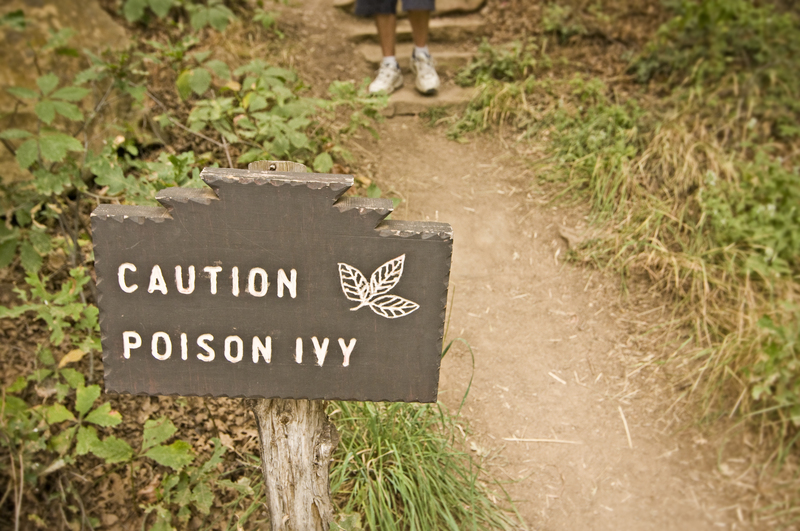Step-by-step Guide to Successful Vertical Gardens
Posted on 11/06/2025
Step-by-Step Guide to Successful Vertical Gardens
Vertical gardens are transforming urban spaces worldwide, offering a captivating blend of nature and design even in the smallest of spaces. Whether you're an apartment dweller with limited outdoor space or a homeowner looking to beautify a boring wall, mastering the art of vertical gardening can bring endless aesthetic and environmental benefits. In this step-by-step guide to successful vertical gardens, we'll walk you through every phase of creating a flourishing vertical oasis.
Why Choose Vertical Gardens?
Vertical gardening systems have rapidly gained popularity, and for good reasons:
- Efficient Space Use: Create lush greenery in balconies, patios, or small backyards.
- Air Quality Improvement: Living walls filter pollutants and increase oxygen.
- Temperature Regulation: Vertical gardens help insulate buildings, reducing cooling costs.
- Urban Aesthetics: Add value and beauty to homes and public buildings.
- Enhanced Privacy: Serve as attractive green screens between neighbors.
Ready to get started? Follow our comprehensive step-by-step vertical garden guide below!

Step 1: Planning Your Vertical Garden
Assess Your Space
Before selecting plants or buying materials, take time to carefully evaluate where your garden will grow. Consider:
- Sunlight: How many hours of direct or indirect light does the wall or space receive?
- Wall Structure: Is the intended surface solid enough to support a vertical garden installation?
- Accessibility: Can you easily water, prune, and maintain the plants once they're growing?
- Microclimate: Does the area experience wind, temperature extremes, or high humidity?
Define Your Goals
Are you aiming for an edible herb wall, a floral feature, privacy screen, or an air-purifying garden? Knowing your purpose will help pick the right plants and structure for your vertical gardening project.
Step 2: Choose the Right Vertical Garden System
Types of Vertical Garden Structures
- Pocket Planters: Felt or fabric pockets attached to a frame or wall, ideal for herbs and small flowering plants.
- Modular Panels: Interlocking panels that hold soil or hydroponic medium, great for larger installations.
- Trellises & Grids: Classic structures supporting climbing or vining plants.
- Recycled Containers: Upcycled bottles, gutters, or shoe organizers for DIY garden walls.
- Pots on Shelves: Tiered racks or hanging shelves that hold pots - a simple choice for beginners.
DIY vs. Commercial Kits
Should you build your own or buy a ready-made kit?
- DIY vertical gardens are affordable and customizable. Common materials include wooden pallets, old ladders, and PVC pipes.
- Commercial kits are convenient, often coming with integrated irrigation systems and stylish finishes, but tend to be more expensive.
Tip: Match your choice to your budget, technical skills, and the permanence you want for your living wall garden.
Step 3: Selecting Suitable Plants for Your Vertical Garden
Factors to Consider
- Light Requirements: Shade-loving ferns versus sun-loving succulents.
- Maintenance Level: Some plants need more water or pruning than others.
- Root Size: Compact roots are easier to manage in vertical plant walls.
- Growth Habit: Do you want trailing, upright, or bushy plants?
Popular Plant Choices
- Herbs: Basil, parsley, mint, thyme, oregano.
- Flowers: Petunias, fuchsias, impatiens, begonias.
- Vines & Climbers: English ivy, pothos, philodendron, jasmine.
- Ferns & Foliage: Boston fern, maidenhair, spider plant, philodendrons.
- Succulents: Sedum, echeveria, crassula (great for sunny spots and low-water systems).
Tip: Mix varieties for year-round interest, but ensure each plant shares similar water and light needs.
Step 4: Building the Vertical Gardening Structure
Basic Materials You Might Need
- Backing board (for protecting the wall and attaching structure)
- Plant pockets, pots, or containers
- Waterproof lining or plastic sheet
- Frame or support grid (wood, metal, or recycled material)
- Soil or hydroponic medium
- Sturdy mounting hardware (anchors, brackets, screws)
Step-By-Step Installation
- Attach backing board: Secure a moisture-resistant board to protect your wall from water damage.
- Add waterproof lining: Install a plastic or rubber layer over the board as an extra barrier.
- Mount the frame or grid: Attach your selected structure securely, checking for level and stability.
- Insert planters/pockets: Fix fabric pockets, pots, or containers to the structure, spacing them appropriately.
- Add growing medium: Fill each pocket or pot with quality soil or a hydroponic medium, based on your plant selection.
- Install irrigation (optional but recommended): Consider a drip system or soaker hose for even, efficient watering.
Step 5: Arranging and Planting
Design and Layout Tips
- Visual Impact: Place bolder, larger-leaved plants at eye level or as focal points.
- Layering: Start with trailing plants at the bottom and upright ones at the top for a lush, cascading effect.
- Color Play: Alternate greens with bright or variegated foliage, and stagger blooming plants for year-round color.
- Test Arrangement: Before planting, lay out all plants on the ground to create your ideal pattern and adjust as required.
How to Plant in Vertical Gardens
- Gently remove seedlings from nursery pots. Loosen roots if needed.
- Place each plant into its pocket or pot. Ensure roots are surrounded by soil and position each specimen according to your design.
- Firm in the soil to eliminate air pockets and provide stability.
- Water thoroughly, ensuring every layer is moist.
Step 6: Watering and Fertilizing Your Vertical Garden Wall
Irrigation Essentials
- Manual Watering: Use a watering can with a long spout to reach every plant, especially in small DIY vertical gardens.
- Automatic Drip Systems: Perfect for larger or high-maintenance gardens, these deliver even moisture to every pocket or pot.
- Self-Watering Planters: Some modular systems come with built-in reservoirs, reducing the frequency of watering.
Monitor for overwatering and underwatering: Excess water leads to root rot, while dry pockets can stress plants.
Feeding Your Living Wall
- Use a balanced liquid fertilizer or slow-release pellet, following manufacturer instructions.
- Feed more often during the growing season (spring and summer).
- Flush the system with plain water occasionally to prevent salt buildup.
Step 7: Maintenance for a Healthy Vertical Green Wall
General Maintenance Tasks
- Trim and prune to encourage bushiness and prevent overgrowth.
- Replace or rotate plants that outgrow their space or die off.
- Keep an eye out for pests and diseases -- treat at the first sign.
- Check the wall and structure regularly for signs of moisture damage or instability.
Seasonal Care Tips
- Spring: Refresh soil, replace dead plants, boost fertilizing schedule.
- Summer: Increase watering frequency, watch for wilting.
- Fall: Cut back aggressive growers, clean up fallen leaves.
- Winter: Protect from frost with covers or by moving containers indoors as needed.
Troubleshooting Common Vertical Gardening Problems
Addressing Common Issues
- Wilting or Brown Leaves: Often due to inconsistent watering or root crowding.
- Yellowing Foliage: Could indicate overwatering or nutrient deficiencies.
- Fungal Growth or Mold: Improve air circulation and reduce moisture.
- Pest Infestations: Use neem oil or insecticidal soap and quarantine affected plants.
- Plants Outgrowing Space: Regularly trim or replace with more compact varieties.
Early intervention prevents most vertical garden problems from escalating.
Ideas and Inspiration for Vertical Gardens
Creative Vertical Garden Designs
- Indoor Living Walls: Make a living room statement with lush ferns or philodendrons.
- Outdoor Herb Walls: Grow fresh basil, mint, and parsley in a sunny kitchen garden.
- Privacy Screens: Use tall grasses or dense foliage to create secluded outdoor nooks.
- Urban Art: Combine plants with recycled materials for eco-chic art installations.
- Pallet Gardens: Repurpose wooden pallets for quick, rustic vertical gardening projects.
For added interest, incorporate elements such as LED lighting, ceramic pots, or integrated seating into your vertical design.

Frequently Asked Questions About Vertical Gardening
- Is vertical gardening only suitable for outdoors?
Not at all! Many houseplants, especially air-purifying varieties, thrive indoors with proper light and humidity. - How often do I need to water a vertical wall garden?
Depends on the plants, system, and weather, but check soil moisture daily, especially during hot spells. - Can vegetables grow in vertical garden systems?
Yes. Leafy greens, lettuce, strawberries, and some compact peppers or cherry tomatoes thrive in vertical beds. - What if my wall is in partial or full shade?
Choose shade-tolerant species like ferns, ivy, and pothos to ensure success. - Are vertical gardens permanent structures?
They can be temporary or permanent, depending on the structure and materials used.
Conclusion: Enjoying Your Vertical Garden Success
A vertical garden isn't just a space-saving gardening technique--it's a living piece of art that nurtures well-being and enhances your environment. From selecting the perfect site and system, choosing plants, building your living wall, and providing ongoing care, the process may seem daunting at first. But by following this detailed step-by-step guide to successful vertical gardens, aspiring gardeners at any level can cultivate lush, beautiful results year-round.
Start small or go bold--the key is to enjoy experimenting with new plants, layouts, and designs. Not only will you create a vibrant focal point, but you'll also help the planet by greening your space vertically. Happy gardening!
Related Searches:
- vertical garden setup guide
- how to grow a vertical garden
- vertical wall gardening tips
- best plants for vertical gardens
- indoor and outdoor vertical gardening systems

